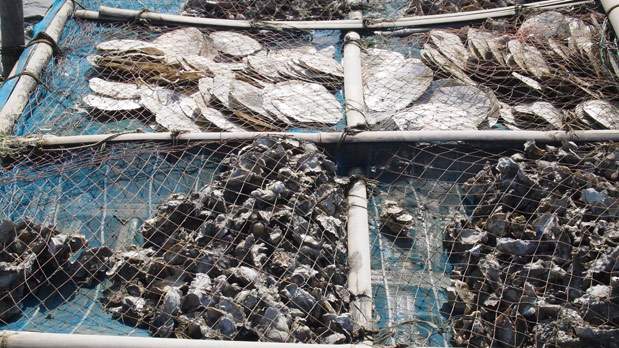Cultivating oysters to combat coastal erosion in Bangladesh
THE CHALLENGE
Bangladesh is one of the world’s poorest nations and one of the most susceptible to climate change. An increase in rainfall, rising sea levels and tropical storms is forecast to bring serious consequences for human health, agriculture, drinking water and food security in the coming decades. Making matters worse, along parts of the country's coastline, severe coastal erosion means some low-lying coastal regions are particularly vulnerable to flooding.
THE SOLUTION
The Dutch Partners for Water programme funded a pilot project in southeast Bangladesh using oyster reefs. The aim was to test their potential as a natural way to enhance sedimentation, thereby helping protecting vulnerable sections of coastline against erosion, and to discover their potential as a sustainable aquatic food source for local consumption and trade.
The ECOBAS project (Eco-engineering in Bangladesh), was implemented by the Institutes for Marine Resources & Ecosystem Studies (IMARES) and Agricultural Economics Research (LEI) (both part of Wageningen UR), the Department of Marine Sciences and Fisheries (University of Chittagong, Bangladesh), and Royal HaskoningDHV.

OUR ROLE
The pilot project used methods based on the 'Building with Nature' concept where environmental challenges are remedied through the use of naturally occurring resources. Working together with the various teams taking part in the pilot, we were involved in designing the pilot and reef, managing research on hydrodynamics, hosting workshops, and driving publicity for the project.
Dr. Petra Dankers, our senior consultant for morphology and eco-engineering explains on the background of the Bangladesh pilot. "Research carried out by IMARES in the Netherlands as part of the Building with Nature programme, proved that oyster reefs help improving coastal resilience, as sediment forms naturally behind oyster reefs. The aim of this pilot project was to find out if the method would work in a different part of the world."
To make this possible the team approached the Dutch Partners for Water for funding. Bangladesh was chosen because of its critical issue concerning climate change and its close ties with the Netherlands, which meant relationships were already established.
Our project leader, Alex Hooijer, explains how the pilot was set up. "After initial tests, relating to the ability of oyster spat (oyster larvae) to grow in this environment, had proven positive, a concrete reef structure was built along the coast of Kutubdia Island. In due time, this structure is expected to be covered with oysters, forming a natural reef. By monitoring biological parameters and measuring beach elevation, the effect and feasibility of such a reef was investigated. Community involvement of the islanders started in the preparation phase. Through early involvement and cooperation the pilot was embraced by the local people."
The project has demonstrated that oyster reefs can induce accretion of sediment on the lee side of the reef. As a result of the accretion behind the oyster reef, salt marsh and mangrove development can be enhanced. Dr. Dankers emphasizes that the effects of the reef are indirect. "Due to the accretion behind the reef a more extensive foreshore is created. As a result, wave damping occurs and the primary defense is less affected."
KEY FACTS
Oyster reefs for sustainable coastal protection and mangrove stimulation
-
Oysters naturally create three dimensional reefs. These reefs can dissipate wave energy and therefore influence the morphology in the coastal zone, offering a sustainable option for improving coastal resilience.
-
As well as combatting coastal erosion and providing a sustainable food source, oyster reefs also stimulate the growth of mangroves, which offer further protection and other ecological and economic benefits.
CONTACT US
Petra Dankers
Senior Project Leader & Advisor Morphology and Eco-engineering
Nijmegen, NL
+31 88 348 68 69
+31 6 11 91 41 63
petra.dankers@rhdhv.com